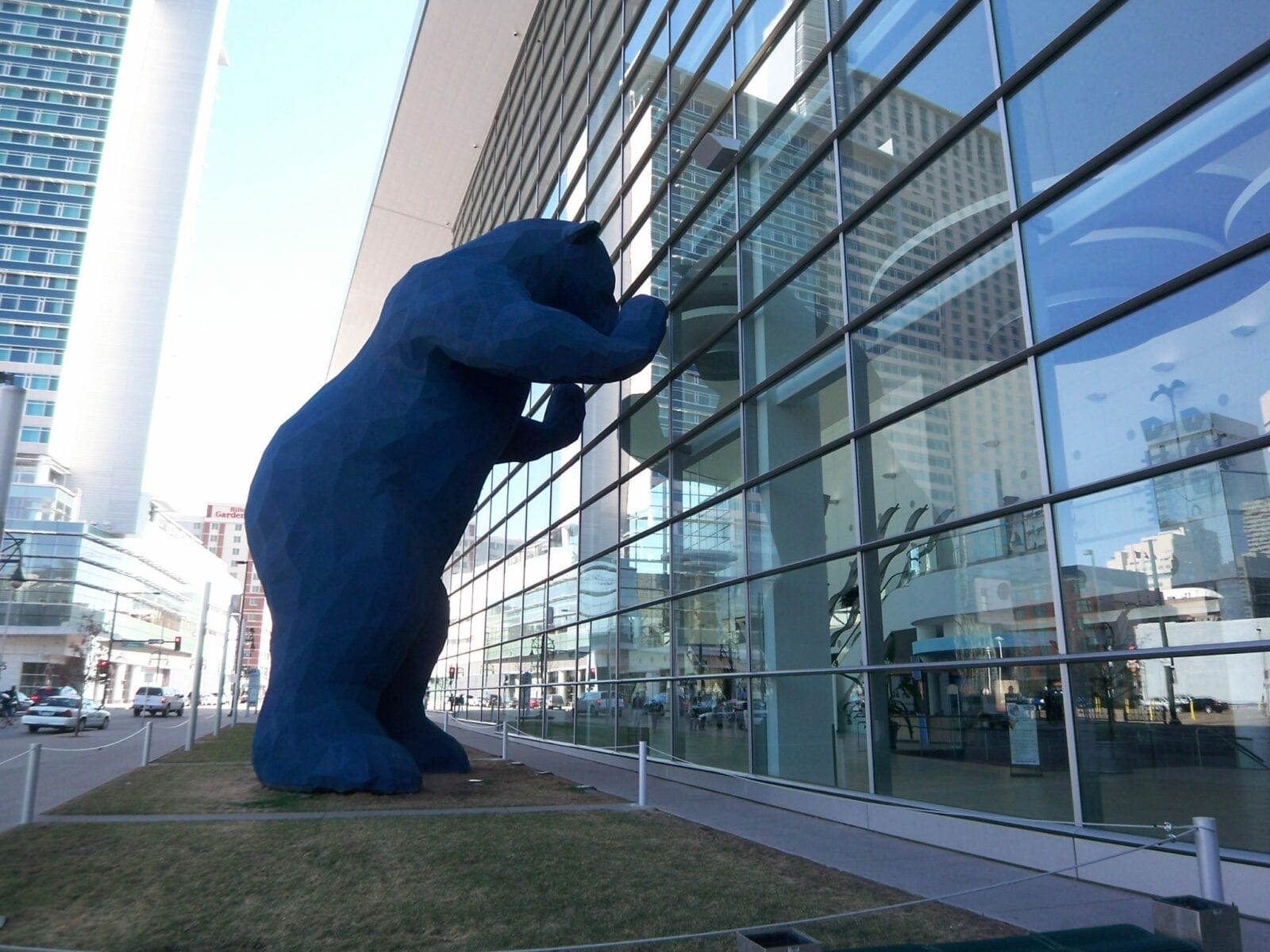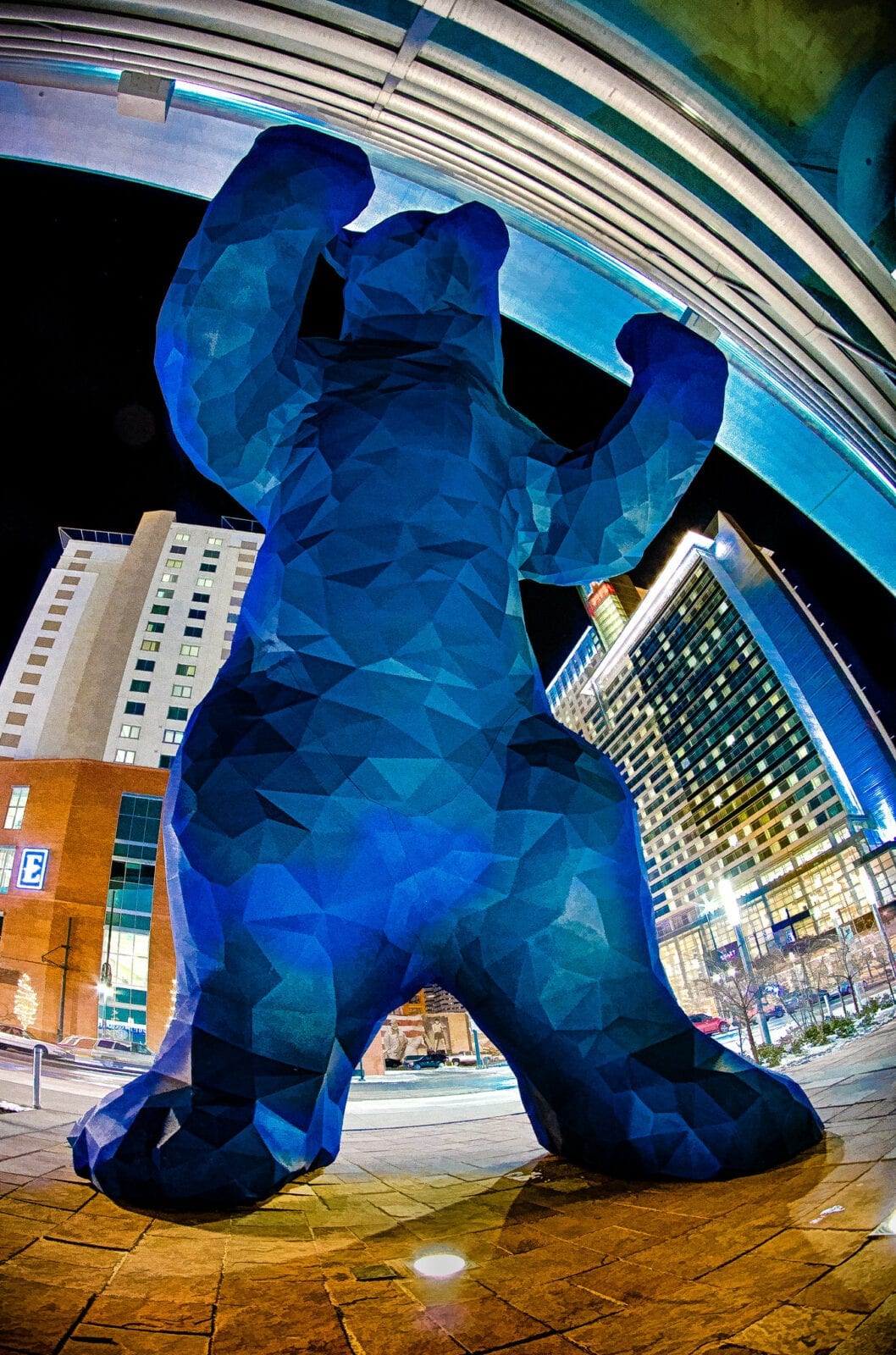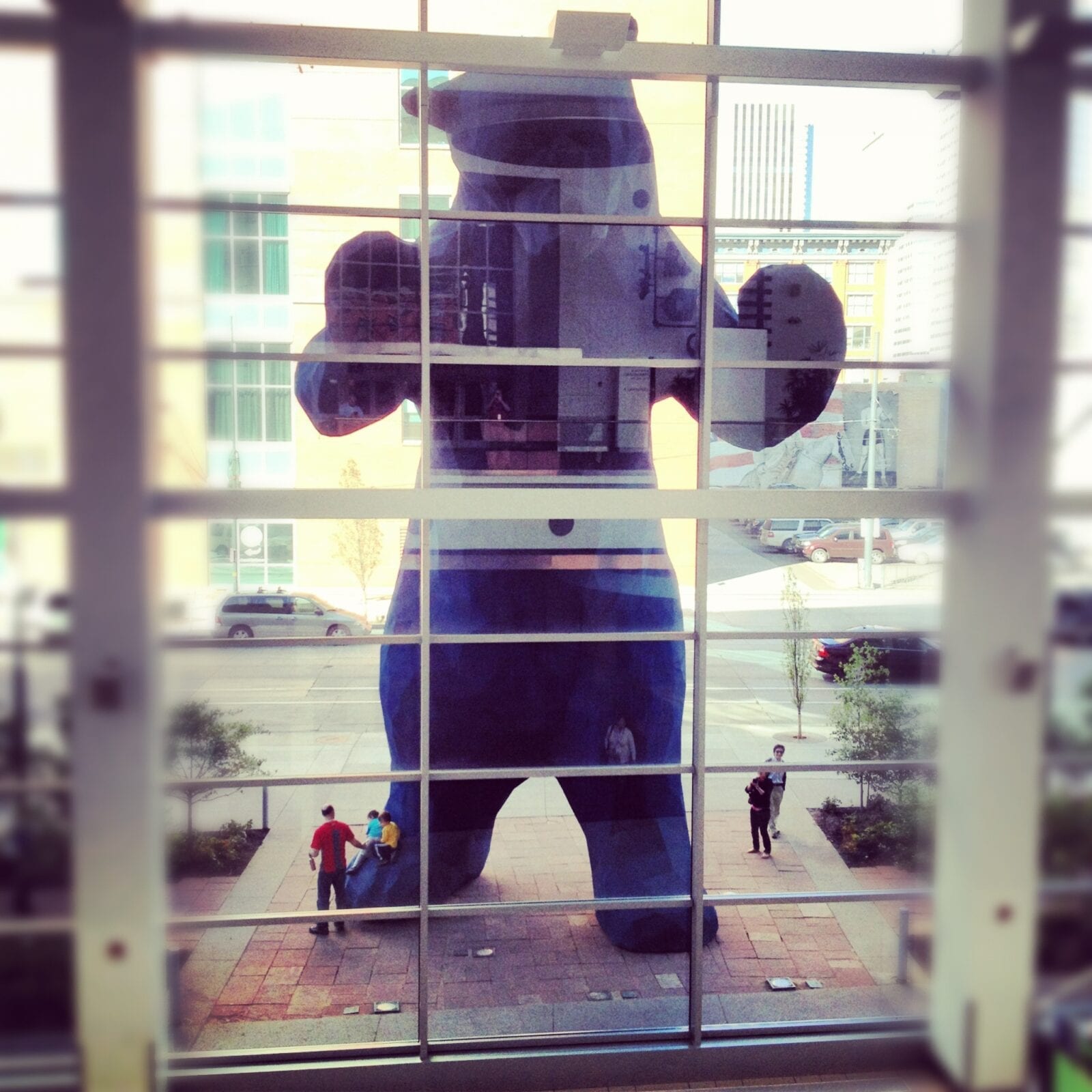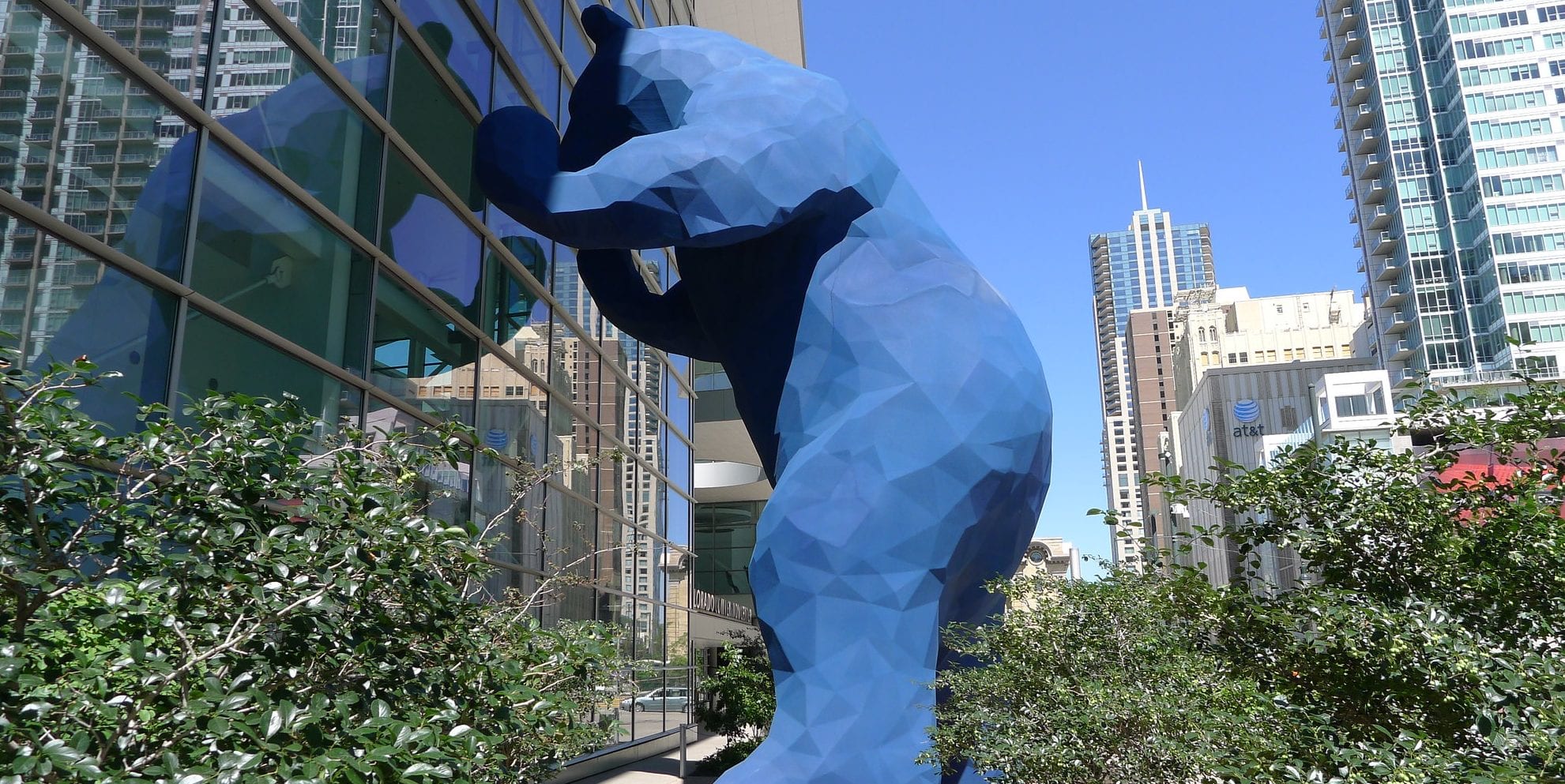Denver…home to the big blue bear? For those not from Colorado or those who have never visited, the term “big blue bear” may not hold much meaning but it does for those who call the Centennial State home and for those who have visited Denver’s downtown.
Erected in the summer of 2005 by Lawrence Argent, the sculpture that everyone refers to as the big blue bear is actually named “I See What You Mean.” Spotted from a distance the bear, which quickly became a Mile-high icon, reaches 40 feet in height and it is rumored to weigh 10,000 pounds, all of which is peering into Colorado’s Convention Center.
How did the big blue bear come to be?

Argent, given the task of making a piece of art for the city of Denver, he wanted to avoid stereotypical Colorado. “There’s an iconic Colorado imagery – the Rockies, the Flatirons, and all that – that I think is a little bit overused, a little passe,” said Argent in an interview with Denver.org. He wanted something that stood out while still representing the state of Colorado.
Sparked with the thought of what pedestrians might think as they pass by the building, filled with thoughts of curiosity about what might be happening behind the doors of the convention center, he felt the curious bear would embrace that exact thinking and wonderment.
Inspired by an image he had seen in a local newspaper of a bear peaking into a Colorado home fueled his pursuit of creating the curious bear, something that Coloradoans are all too familiar with – wildlife meeting everyday life.
So, why blue?

Argent wanted the piece to be eye-catching but hadn’t planned on the bear being blue. Originally the color of the bear was meant to be earth tones to represent Colorado’s topography but because of a printing error, Argent saw how stunning the piece would be in blue and proceeded with the brilliant blue hue. So, by a happy accident, we have the big blue bear and we wouldn’t have it any other way.
Where was he created?
Most would think that the big blue bear was made in Colorado but actually the bear was made in California and transported to Denver to its final resting place. The development of the bear began behind the computer screen where Argent and his team were able to adjust and change the pose of the bear using an animation software program. The files were sent to the fabricators Krysler and Associates for the mols.
The bear was built by six major sections – the left and the right legs, the belly, the right, and the left arm, shoulders, and head. Each of these sections was trucked from California to Denver, where it was assembled.

The assembly was completed with the head of the bear as the last piece to add. One worker had to work inside the steel frame structure of the bear, fastening and bolting the pieces together. The six separate pieces once joined together, were then sprayed with a topcoat of pigmented polymer concrete. And that is how the big blue bear was born!
How much did it cost?
As you most likely could anticipate, the big blue bear did not come cheap. As the project came to a close the price tag reached $424,400.
About the artist
Before his passing in 2017, Argent was a man of truly creative talents. He was not only an artist who contributed to the community with his artwork, but he also taught the inspiring minds of the younger generation. During the project, he was an associate professor of art at the University of Denver and taught a few other places prior to.
Where to find the big blue bear
While it isn’t hard to miss, here’s how to find the big blue bear. On Fourteenth Street between California and Stout, the statue is seen peering into the Colorado Convention Center in Downtown Denver.


 The Largest Natural Lakes in Colorado
The Largest Natural Lakes in Colorado